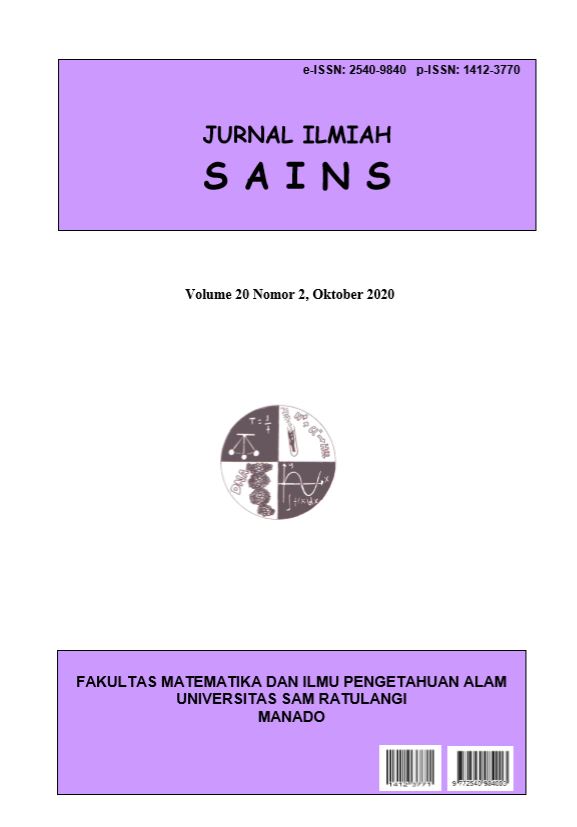Implementation Assistance Driver System for Public Transportation Based on Embedded System
DOI:
https://doi.org/10.35799/jis.20.2.2020.28261Abstract
According to data from the World Health Organization (WHO) per year around 1.35 million people die as a result of traffic accidents. Therefore, one solution is the development of Smart Transportation, namely the implementation of the Advanced Driver Assistant System (ADAS) on public transportation. The purpose of this study is to provide a level of safety in public transportation in the form of providing recommendations in driving. ADAS is implanted in an Odroid device and then installed on public transportation. The system can provide speed recommendations, predict vehicle conditions whether safe or dangerous, and detect traffic signs. In its implementation the system provides speed recommendations using Artificial Intelligence (AI) which is the fuzzy logic method and to predict the condition of the vehicle using machine learning that is the Support Vector Machine method. The system output in the form of speed recommendations, vehicle safety predictions and traffic signs detection will be directly accepted by the driver both visually and soundly. From the test results, the system has an accuracy rate of 95.25% in predicting vehicle conditions.
Keywords: Assistance driver system; artificial intelligent; embedded device; machine learning; odroid
Â
Impelementasi Assistance Driver System untuk Transportasi Publik Berbasis Sistem Embedded
ABSTRAK
Menurut data dari organisasi kesehatan dunia (WHO) per tahun sekitar 1,35 juta orang meninggal akibat kecelakaan lalu lintas. Salah satu solusinya adalah pengembangan smart transport, yaitu penerapan advanced driver assistant system (ADAS) pada angkutan umum. Tujuan penelitian ini memberikan tingkat keselamatan pada transportasi publik berupa pemberian rekomendasi dalam berkendaraan. Â ADAS ditanamkan dalam perangkat odroid dan kemudian dipasang pada transportasi umum. Sistem ini dapat memberikan rekomendasi kecepatan, memprediksi kondisi kendaraan apakah aman atau berbahaya, dan mendeteksi rambu-rambu lalu lintas. Dalam implementasinya sistem memberikan rekomendasi kecepatan menggunakan artificial intelligence (AI) yang merupakan metode logika fuzzy dan untuk memprediksi kondisi kendaraan menggunakan pembelajaran mesin yaitu metode support vector machine. Output sistem dalam bentuk rekomendasi kecepatan, prediksi keselamatan kendaraan dan deteksi rambu lalu lintas akan langsung diterima oleh pengemudi baik secara visual maupun suara. Dari hasil pengujian, sistem memiliki tingkat akurasi 95,25% dalam memprediksi kondisi kendaraan.
Kata kunci: Assitance driver system; Â inteligensi buatan; perangkat tertanam; pembelajaran mesin; odroid
References
Bengio, Y., P. Lamblin, D. Popovici, & H. Larochelle. 2007. Greedy layer-wise training of deep networks. In Advances in neural information processing systems, 153–160.
Caragliu, A., C. Del Bo, & P. Nijkamp. 2011. Smart cities in Europe. Journal of Urban Technology, 18(2): 65-82.
Gori, P., P.L. Parcu, & M. Stasi. 2015. Smart cities and sharing economy. Robert Schuman Centre for Advanced Studies Research Paper No. RSCAS, 96.
Iranmanesh, S. M., H. Nourkhiz-Mahjoub, H. Kazemi & Y.P. Fallah. 2018. An adaptive forward collision warning framework design based on driver distraction. IEEE Transactions on Intelligent Transportation Systems, 19(12), 3925–3934. DOI: 10.1109/TITS.2018.2791437.
Karpathy, A. 2017. Convolutional neural networks. Stanford.
Krizhevsky, A., I. Sutskever, & G.E. Hinton. 2012. Imagenet classification with deep convolutional neural networks. In Advances in neural information processing systems, 1097–1105.
Mitchell, T. M., & Others. 1997. Machine learning. McGraw-hill, New York.
Mukhtar, A., L. Xia & T.B. Tang. 2015. Vehicle detection techniques for collision avoidance systems: A review. IEEE Transactions on Intelligent Transportation Systems, 16(5): 2318-2338. DOI: 10.1109/TITS.2015. 2409109.
Organization, W. H., & Others. 2017. Road safety.
Park, H. S., D.J. Kim, C.M. Kang, S.C. Kee, & C.C. Chung. 2017. Object detection in adaptive cruise control using multi-class support vector machine. 2017 IEEE 20th International Conference on Intelligent Transportation Systems (ITSC), 1–6.
Park, S., H. Han, B.S. Kim, J.H. Noh, J. Chi & M.J. Choi. 2018. Real-Time Traffic Risk Detection Model Using Smart Mobile Device. Sensors (Basel, Switzerland), 18(11). DOI:10.3390/ s18113686.
Puspaningrum, A., A. Suheryadi & A. Sumarudin. 2019. Pre-Collision Warning and Recommendation System for Assistant Driver using Least Square Support Vector Machine and Fuzzy Logic. 2019 International Seminar on Intelligent Technology and Its Applications (ISITIA), 371–375.
Rosyara, U. R., D. Vromman & E. Duveiller. 2008. Fuzzy Sets. Journal of Plant Pathology, 90(1): 103–107.
DOI:10.1016/S0019-9958(65)90241-X.
Saunders, T., P. Baeck & Others. 2015. Rethinking smart cities from the ground up. Nesta, London.
Schölkopf, B. & A.J. Smola. 2004. A tutorial on support vector regression. Statistics and Computing, 14(3):199–222. DOI:10.1023/B:STCO. 0000035301.49549.88.
Tian, Y., K. Pei, S. Jana & B. Ray. 2018. Deeptest: Automated testing of deep-neural-network-driven autonomous cars. Proceedings of the 40th international conference on software engineering, 303–314.







